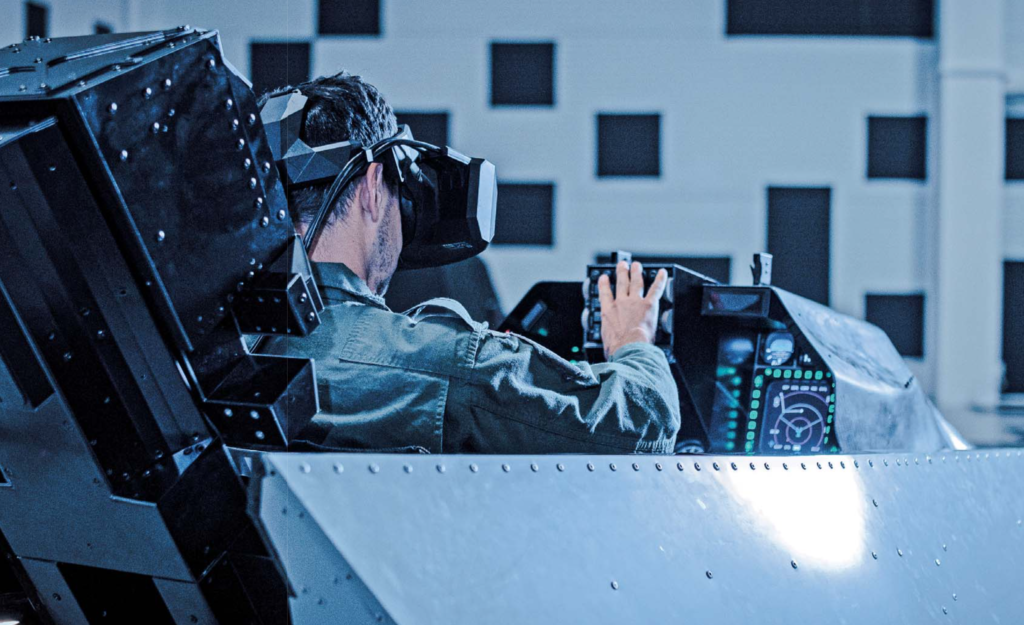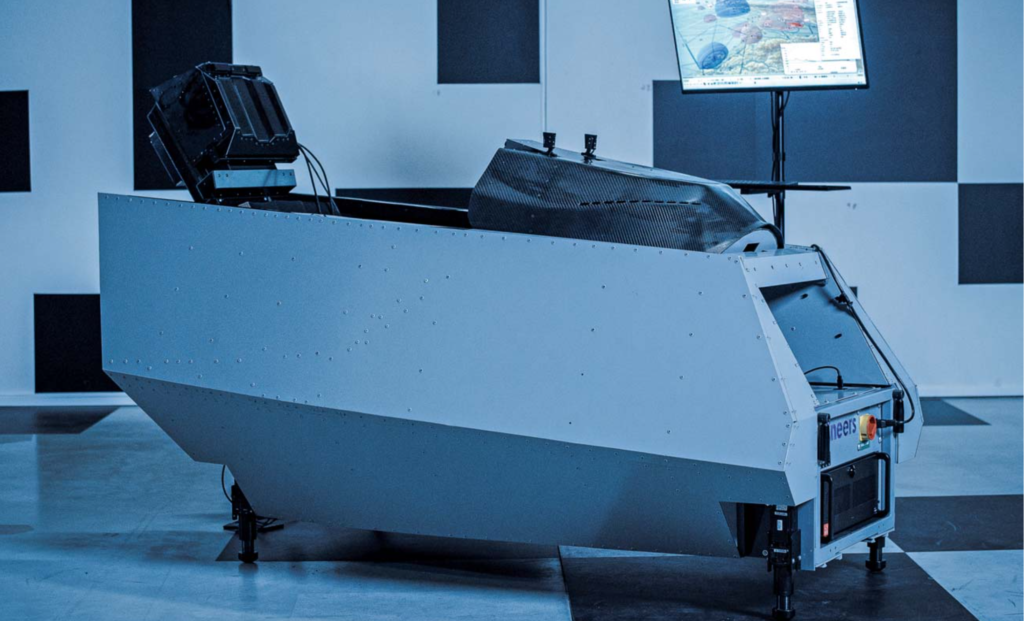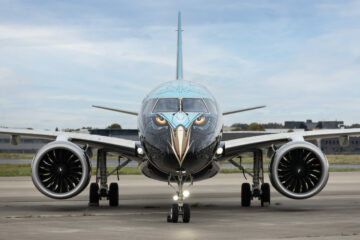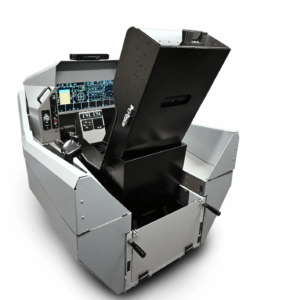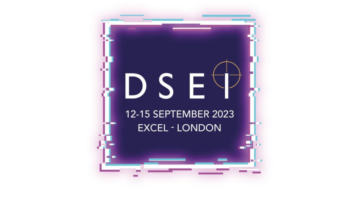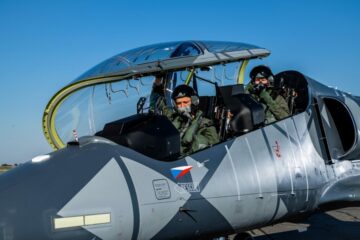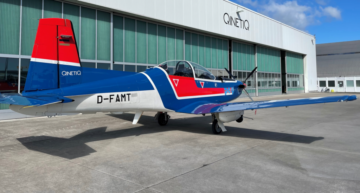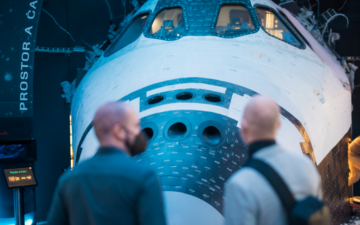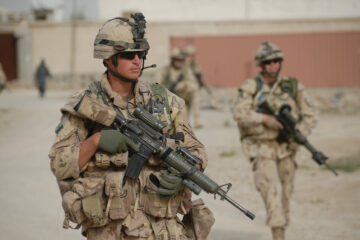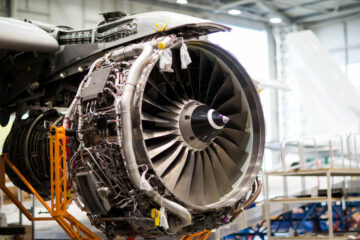Breaking the rules and bringing disruptive innovations to market has become the hallmark of Czech-American company Vrgineers since its founding in 2017. We interviewed their CEO Marek Polcak last year exclusively for our magazine. In that interview, we took a deep dive into virtual reality with their state-of-the-art XTAL™ 3 headset, which offers 8K resolution with a high-fidelity display and a 180° field of view that provides peripheral vision and resolution close to that of the human eye. A true game changer in pilot training.

Following closely on the heels of this year’s Farnborough show, where the company introduced the Portable Trainer, a mobile simulator that literally folds into a rugged hard case and can be taken anywhere in the world to prepare and enable pilots to meet training and mission requirements. This solution shows how minimalist design and new technologies like virtual reality allow us to take pilot training to a new level.


Turboprop, subsonic, supersonic. You can have it all.
This story, however, is about a new type of mixed reality simulator that is very different from the data projector-based simulators we are familiar with and will shape the industry in the coming years.
This new simulator from Vrgineers, called Classroom 2.0 Trainer, is unique for many reasons. One of the most important is its reconfigurability: the trainer has interchangeable components on the sides and in the center, making it easy to switch between different types of aircraft. Yes, you read that right – you can literally have any aircraft for your commercial or military pilot training in minutes.
This concept is based on an intelligent design with a focus on details that meet current market requirements. The simulator consists of 4 main parts: the core module, the center and side panels, and the seat. The core module includes all the computing power with virtual and mixed reality technology. As the name suggests, the core module contains all the core technologies and is therefore the most expensive part of the simulator. Thanks to the tracking system and adjustable seat with electronically controlled height and manually adjustable angle, the same core module can be used to accurately simulate the standard seat angle of 13 degrees in most aircraft, as well as 17 degrees in the F-22 Raptor or F-35 Lightning II, all the way up to the 30-degree limit of the F-16 Fighting Falcon’s seat angle, where the pilot leans backward to reduce blood flow to his brain. A realistic rudder system with adjustable rails ensures the pilot is in the correct position, just like in real aircraft. Thanks to all these details that went into the solution, Vrgineers was able to achieve the accuracy of cockpit dimensions that is the key human factor.
The interchangeable side panels and central panel (CP) include platform-specific left and right side panels (LLP, RLP) and left and right side consoles (LSC, RSC). Although the modules include all trims, switches, levers, MFDs and knobs, they can be easily removed and connected via a USB and power cable. Considering the reconfigurability of the Classroom Trainer 2.0, the user can turn a T-6 into an F-35 in minutes.
First and foremost, the price of two platforms is almost the same as one, since the core module shares all the expensive components.
Vrgineers has specifically designed its Classroom 2.0 trainer platform to support all major aircraft types and manufacturers, from turboprop aircraft such as the T-6 Texan, Grob G 120TP, Diamond Dart and Zlin, to subsonic jets such as the L-39NG or T-7, to terminal platforms such as Lockheed Martin’s F-16 or F-35, and Boeing’s F-15 and F-18. The list can go on and on, however, as Vrgineers is capable of supplying any Western platform and is one of the few suppliers capable of supplying Eastern platforms as well.
Many platforms at an unbeatable price.
Vrgineers’ solution aims to save all air forces around the globe an incredible amount of money. Instead of buying an expensive FFS (Full Flight Simulator) for a specific aircraft, the training facility can purchase 12 Vrgineers Classroom 2.0 trainers for all the platforms it uses at virtually the same price and train the entire air fleet in one facility.
For example, a package with a Vrgineers Classroom 2.0 trainer that includes modules for turboprop, subsonic, and supersonic aircraft can cost around $1 million, which is a fraction of the cost of a standard FFS from an official manufacturer.
As for the price of Vrgineers simulators, it is worth noting that newer platforms such as the F-35 are cheaper to build than the F-16, for example, due to design differences. The F-35 has a glass cockpit and therefore fewer switches, which lowers the final price of the simulator.
These small but important savings that modern fighter aircraft bring must be factored into the total cost of ownership.
State-of-the-art technology where you can train absolutely anything.
Compared to the standard simulator (a dome), where the difference between the data projector screen and the physical, non-moving environment leads to misperception by the pilots, the mixed reality technology avoids such negative training. Pilots are not distracted because no matter what procedure they are training, they are still in the simulation. The XTAL™ mixed reality headset is specifically designed for high-intensity scenarios such as dog fight and aerial combat, where the pilot must rely on visual contact and have the freedom to look around and locate the target.
The flexibility and less space-intensive solution from Vrgineers represent another great benefit for the training facilities.
From procedural training to the most sophisticated challenges. And realistic dogfights.
Compared to dome simulators, Vrgineers’ mixed reality allows pilots to practice procedural training as well as simultaneously perform the most demanding tasks, such as aerial refueling, where the XTAL™ headset provides realistic 3D information about the distance and position of the fuel hose. The mixed reality module embedded in the headset allows the pilot to see his own hands and operate the fully functional cockpit replica.
Thanks to this feature, the pilot learns proper muscle memory and avoids negative training by receiving realistic haptic feedback from the buttons connected to the simulation software.
An unrivalled solution as a result of an industrial cooperation success story.
Traditional military pilot training has been facing major challenges for several years. The benefits of these new solutions for pilot training cannot be overlooked. The greater the hurdles these new systems initially had to overcome, the greater the successes they are rightly celebrating today. Safer, faster and more cost-effective pilot training is now the order of the day for all air forces.
The unprecedented pressure on the number and quality of newly trained pilots is due not only to the growing importance of our defense readiness, but also to the increased demands for safety and effectiveness of training, which must be expanded in both speed and quantity.
Any aircraft manufacturer, from the two-seat turboprop trainer or subsonic fighter to Lockheed Martin’s advanced supersonic aircraft, can and will benefit from working directly with a manufacturer like Vrgineers to jointly deliver a unique solution to the end customer that can then become a true industrial collaboration success story.
Interviewed by: Katerina Urbanova, EIC ACE
Photo credit: Vrgineers
- SEO Powered Content & PR Distribution. Get Amplified Today.
- Platoblockchain. Web3 Metaverse Intelligence. Knowledge Amplified. Access Here.
- Source: https://aero-space.eu/2022/09/11/re-defining-jet-fighter-and-helicopter-simulations-vrgineers-reconfigurable-trainer/
- 2017
- 3d
- a
- Able
- About
- absolutely
- accuracy
- accurately
- Achieve
- adjustable
- advanced
- aims
- AIR
- aircraft
- All
- allows
- Although
- amount
- and
- Another
- anywhere
- around
- Assembly
- based
- because
- become
- benefit
- benefits
- between
- blood
- Brain
- bring
- Bringing
- build
- Buying
- cable
- called
- cannot
- capable
- case
- Celebrating
- Center
- central
- ceo
- challenges
- Changer
- cheaper
- Close
- closely
- Cockpit
- collaboration
- combat
- coming
- commercial
- company
- components
- computing
- computing power
- concept
- connected
- considering
- consoles
- contact
- contains
- controlled
- cooperation
- Core
- Cost
- cost-effective
- credit
- Current
- customer
- data
- day
- deep
- deep dive
- Defense
- deliver
- demanding
- demands
- Design
- designed
- details
- Diamond
- difference
- differences
- different
- dimensions
- directly
- Display
- disruptive
- distance
- Dog
- easily
- eastern
- effectiveness
- electronically
- embedded
- enable
- ensures
- Entire
- Environment
- example
- exclusively
- expanded
- expensive
- eye
- Facility
- facing
- familiar
- faster
- Feature
- feedback
- few
- field
- fight
- fighting
- final
- FLEET
- Flexibility
- flight
- flow
- Focus
- Forces
- foremost
- founding
- fraction
- Freedom
- from
- Fuel
- full
- fully
- functional
- game
- game-changer
- glass
- globe
- Go
- great
- greater
- Growing
- Hands
- haptic
- Hard
- height
- helicopter
- here
- How
- However
- HTTPS
- human
- Hurdles
- importance
- important
- in
- include
- includes
- increased
- incredible
- industrial
- industry
- information
- initially
- innovations
- Intelligent
- Interview
- interviewed
- introduced
- IT
- Key
- Last
- Last Year
- Leads
- Level
- lightning
- LIMIT
- List
- LLP
- Look
- Main
- major
- Making
- manually
- Manufacturer
- Manufacturers
- many
- Market
- Matter
- max-width
- Meet
- Memory
- Military
- million
- minutes
- Mission
- mixed
- mixed reality
- Mobile
- Modern
- module
- Modules
- money
- more
- most
- name
- negative
- New
- New technologies
- number
- Offers
- official
- ONE
- operate
- order
- Overcome
- own
- ownership
- package
- panel
- panels
- part
- parts
- perform
- physical
- picture
- pilot
- platform
- Platforms
- plato
- Plato Data Intelligence
- PlatoData
- position
- power
- practice
- Prepare
- pressure
- price
- proper
- provides
- purchase
- quality
- quantity
- rails
- Read
- Readiness
- real
- realistic
- Reality
- reasons
- receiving
- reduce
- Removed
- replica
- represent
- Requirements
- Resolution
- result
- rules
- safer
- Safety
- same
- Save
- Savings
- scenarios
- Screen
- several
- Shape
- Shares
- show
- Shows
- Sides
- simulation
- simulator
- simultaneously
- since
- small
- Software
- solution
- Solutions
- sophisticated
- specific
- specifically
- speed
- standard
- state-of-the-art
- Still
- Story
- success
- success story
- such
- Suggests
- supersonic
- suppliers
- supplying
- support
- Switch
- system
- Systems
- Take
- Target
- tasks
- Technologies
- Technology
- Terminal
- The
- the world
- their
- therefore
- to
- today
- Total
- Tracking
- Train
- trained
- Training
- Transformation
- true
- TURN
- types
- unique
- unprecedented
- us
- usb
- User
- via
- View
- Virtual
- Virtual reality
- virtually
- vision
- Western
- What
- which
- will
- working
- world
- worth
- year
- years
- Your
- youtube
- zephyrnet

